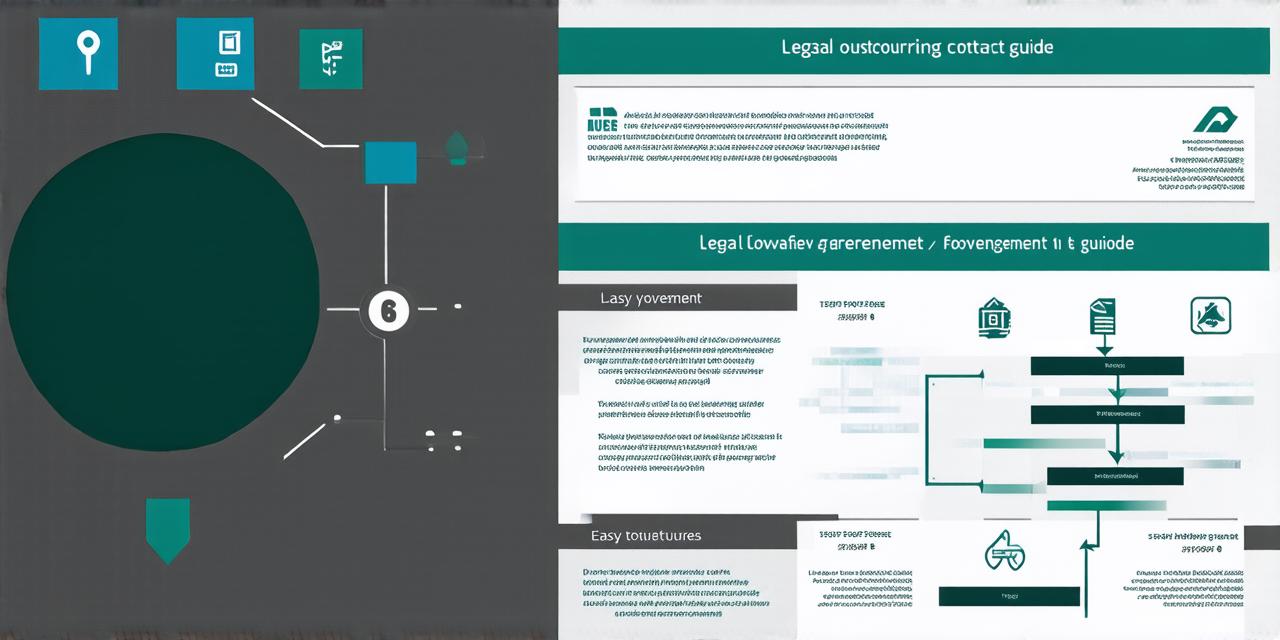Guide to Drafting a Vested Outsourcing Contract
Here’s the corrected HTML code for the article:
Introduction:
Outsourcing is becoming increasingly popular in today’s business landscape. It allows companies to focus on their core competencies while outsourcing non-core functions such as IT, HR, and marketing. However, drafting an effective outsourcing contract is crucial for the success of any outsourcing project. In this article, we will provide a comprehensive guide to drafting a vested outsourcing contract that aligns with your business goals and objectives.
What is Vested Outsourcing?
Vested outsourcing is a collaborative approach to outsourcing where both the client and the service provider work together to achieve mutual success. It involves a shared understanding of business goals and objectives, which leads to a more aligned and efficient relationship between the two parties. In a vested outsourcing contract, both parties are focused on driving value for each other rather than just their own interests.
Key Components of a Vested Outsourcing Contract:
-
The first step in drafting a vested outsourcing contract is to clearly define your business goals and objectives. This will help you identify the specific services that you need from an outsourcing partner and ensure that their services align with your overall business strategy.
-
An SLA is a key component of any outsourcing contract and provides a framework for measuring the success of the outsourcing relationship. In a vested outsourcing contract, the SLA should be based on mutual agreement between the client and the service provider and should focus on achieving shared goals rather than just meeting individual targets.
-
Performance metrics are used to measure the success of the outsourcing relationship and ensure that both parties are held accountable for their performance. In a vested outsourcing contract, the performance metrics should be based on mutually agreed-upon goals and objectives and should focus on driving value for each other rather than just individual targets.
-
Payment terms are an important aspect of any outsourcing contract and should be based on mutual agreement between the client and the service provider. In a vested outsourcing contract, payment terms should be based on achieving shared goals and objectives rather than just on the number of hours worked or the volume of output produced.
-
Intellectual property rights are an important consideration in any outsourcing contract and should be clearly defined to avoid any disputes down the line. In a vested outsourcing contract, intellectual property rights should be based on mutual agreement between the client and the service provider and should focus on protecting both parties’ interests.
Case Study: XYZ Company
XYZ Company was looking to outsource its IT services to a third-party provider in order to reduce costs and free up resources for other areas of the business. The company had previously experienced challenges with outsourcing contracts that were focused on just meeting individual targets rather than achieving shared goals. This led to confusion and misunderstandings between the client and the service provider and ultimately resulted in a lack of alignment and efficiency in the relationship.
To avoid these issues, XYZ Company decided to adopt a vested outsourcing approach. The company worked closely with the service provider to define its business goals and objectives and developed a clear understanding of the services that were needed to achieve those goals. The two parties then agreed on an SLA that was based on achieving shared goals rather than just meeting individual targets, and they established performance metrics that focused on driving value for each other.
The service provider was also given more autonomy to manage its own resources and processes, which led to increased innovation and efficiency in the relationship. This ultimately resulted in cost savings for XYZ Company and improved overall business performance.
FAQs:
1. What is the main purpose of a vested outsourcing contract?
The main purpose of a vested outsourcing contract is to align the interests of both the client and the service provider and ensure that they work together towards shared goals and objectives.

2. How does a vested outsourcing contract differ from a traditional outsourcing contract?
A traditional outsourcing contract focuses on meeting individual targets and may not be aligned with the overall business strategy of the client. In contrast, a vested outsourcing contract is focused on achieving shared goals and objectives and aligns the interests of both parties towards success.
3. What are some key components of a vested outsourcing contract?
Some key components of a vested outsourcing contract include business goals and objectives, service level agreements (SLAs), performance metrics, payment terms, and intellectual property rights.
4. Can a company outsource all its IT services to a third-party provider?
It depends on the specific needs and requirements of the company. Outsourcing all IT services may not be the best approach for every company, as it may result in loss of control and reduced innovation. Companies should carefully evaluate their options and determine which services are best suited for outsourcing.
Conclusion:
Drafting an effective vested outsourcing contract is crucial for the success of any outsourcing project. By aligning the interests of both parties towards shared goals and objectives, a vested outsourcing contract can lead to increased innovation, efficiency, and overall business performance. Companies should carefully evaluate their options and work closely with their service providers to develop a contract that meets their specific needs and requirements.
